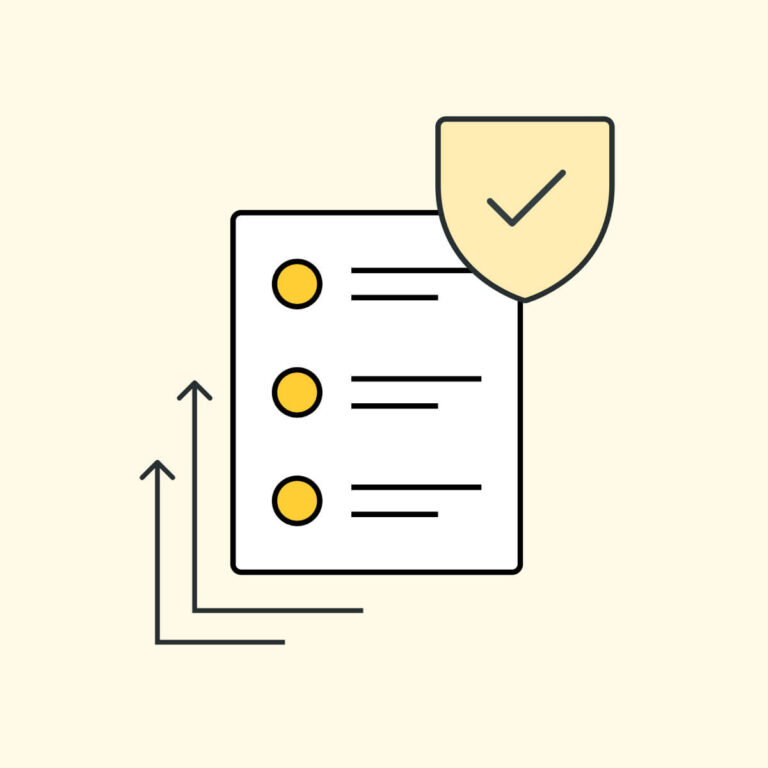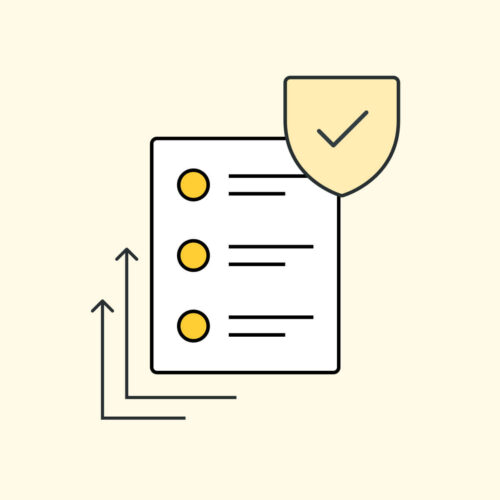BLOG
Navigating the Road to UL Certification for International Lighting Companies Entering the US Market: Best Practices to Light Your Path


As globalization continues to reshape our world, businesses from every corner of the globe have opportunities to expand their reach beyond local markets. The United States stands out as a particularly attractive market in this global playing field due to its size, diversity, and receptivity to innovation. However, for international lighting manufacturers looking to tap into this lucrative market, the journey is not without its challenges. Companies like Casambi, known for its smart wireless lighting control solutions, understand the need for UL certification to ensure the highest product safety standards are met.
The Role and Importance of Underwriters Laboratories (UL)
First and foremost, manufacturers must grapple with understanding and adhering to a unique set of regulatory requirements and safety standards, chief among them being those established by Underwriters Laboratories (UL). UL is a product safety certification company that has been around for well over a century, with a reputation for setting some of the most rigorous safety standards in the world. This is evident in the experiences of companies like Casambi, whose advanced lighting solutions have undergone thorough evaluation to meet UL standards.
Founded in 1894, Underwriters Laboratories has been at the forefront of product safety testing and certification. It was established during a time of rapid industrialization and technological advancement in the United States, where new electrical devices and appliances were flooding into the market with little to no safety regulations in place. Over the years, UL has grown and evolved alongside these industries, establishing safety standards recognized nationally and globally.
UL Certification Standards for Key Product Categories
The certification process offered by UL provides a rigorous and comprehensive evaluation of a product’s safety. These standards cover various product categories, with distinct certifications for each, such as UL 1598 for luminaires, UL 8750 for LED equipment, and UL 1993 for self-ballasted lamps and adapters.
UL 924 is titled “Emergency Lighting and Power Equipment” and covers emergency lighting and power equipment for use in unclassified locations and hazardous (classified) locations. Emergency lighting equipment includes devices such as emergency exit lights, which activate during a power outage to illuminate exit routes and ensure safe evacuation. The UL 924 standard tests for reliable operation under emergency conditions and evaluates factors such as mechanical integrity, circuitry functionality, and battery performance.
UL 60730-1 is the general standard for “Automatic Electrical Controls,” intended to cover a broad spectrum of electrical control devices. These controls could be used in appliances, HVAC systems, and other equipment, and the standard evaluates them for fire, electrical shock, and mechanical hazards under normal operation. It’s part of the larger UL 60730 series, which includes specific parts (like UL 60730-2-9 for motor starting relays) that provide additional requirements for particular types of controls. In aggregate, these all ensure that every aspect of a product’s safety is thoroughly assessed before it reaches the consumer’s hands.
Addressing Unique UL Certification Challenges for International Lighting Manufacturers
For international lighting manufacturers, the process of earning a UL certification is a significant undertaking. It’s not merely about translating and adapting a product to a new market, but about fully understanding and meeting a completely new set of safety standards and expectations.
In addition to the technical aspects, these manufacturers also face a host of other challenges. Differences in consumer preferences, marketing, and branding strategies, supply chain complexities, and even cultural nuances all come into play. U.S. business laws, intellectual property rights, and taxes each have their own complexities. These are things you’ll need to navigate carefully.
In essence, penetrating the U.S. market is like exploring a new frontier. The rewards can be substantial, but the challenges are equally daunting. However, armed with a thorough understanding of regulatory requirements, a commitment to product safety, and a thoughtful strategy to address the various challenges, international lighting manufacturers can light up their path to success in the U.S. market.
Best Practices for UL Certification
Let’s start with a big one: Pay Attention to Proper Component Separation
One of the key factors often taking center stage when designing and manufacturing lighting products is the aspect of component separation. Component separation is a fundamental necessity in ensuring both electrical and fire safety, a requirement that is heavily emphasized in UL standards and other similar safety protocols.
At a basic level, component separation refers to the strategic placement and separation of different parts of a lighting device, with a keen emphasis on the segregation of high-voltage and low-voltage circuits, as well as live parts from grounding points. This separation isn’t arbitrary; it serves critical safety functions and is instrumental in mitigating risks associated with electrical malfunctions. For instance, consider a typical LED lighting fixture equipped with a high-voltage power supply and low-voltage control circuits. If these two were to come into close contact without proper insulation or barrier, it could result in electrical arcing—a spark that can lead to a short circuit. This not only compromises the functionality of the lighting device but also poses a significant safety risk, including potential fire hazards.
In another example, let’s take a look at a lighting product equipped with a metal housing. It’s imperative that live parts of the circuit are sufficiently isolated from this metal housing. Inadequate separation can lead to the housing becoming live, which could cause a serious electric shock to anyone who comes into contact with it. This is where the use of grounding comes into play, a safety measure that ensures any unintentional electrical discharge is directed away from the user and into the earth.
In both these scenarios, the key lies in the design phase—each lighting device must be meticulously designed with appropriate barriers, insulation, or physical separation. Barriers can be physical structures made from insulating materials, placed between high and low-voltage areas, or between live parts and grounding points. Insulation, on the other hand, can be specialized coatings or sleeves that provide additional protection against electrical discharge.
UL standards give clear instructions on how much space should be between components depending on their voltage levels and the type of insulation used. For instance, for basic insulation where the supply voltage is up to 150V, a clearance of 1.5mm is required. These standards provide detailed tables and guidelines to help designers maintain adequate clearance and creepage distances, ensuring proper component separation.
There are many other best practices and frameworks, each as crucial as component separation. Below, we deep dive into some of these important topics.
Prioritize Physical Safety
UL Certification is deeply rooted in physical safety. For instance, standards such as UL 1598, UL 8750, and UL 1993 are designed to mitigate risks like electric shock, fire hazards, and physical injuries. As a lighting manufacturer, it’s critical to focus on minimizing these hazards from the outset. Incorporate safety mechanisms such as thermal cut-offs, fault protection, and robust housing to keep your users safe. Ensure your product complies with relevant mechanical stability, construction, and installation requirements.
Consider UL Requirements During Initial Hardware Design
A common pitfall for manufacturers is to consider UL requirements as an afterthought. However, integrating these requirements into the initial hardware design can save significant time and resources. Anticipate UL requirements early in the design phase. Then, build your product to align with the specific UL standard it needs to comply with. This preemptive approach can dramatically reduce the likelihood of rework and expedite your path to certification.
Embrace Redundancy but Safeguard Users
Redundancy is integral to the reliability of your lighting product. However, it’s crucial that redundant components do not pose a hazard to the end user. Incorporate features such as fail-safe modes, and make sure redundant components can withstand fault conditions. The key is to achieve a balance between enhanced product reliability and ensured user safety.
Implement Safe Auto-Electrical Controls
Auto-electrical controls can add considerable value to your product by enabling automatic adjustment of lighting levels and energy savings. Companies like Casambi specialize in smart lighting control solutions that meet the stringent UL standards for product safety and performance. However, these controls must be designed to ensure user safety. They should not only meet the functional safety requirements but also be able to handle any abnormal operating conditions without posing risks. Remember, UL Certification ensures not only the correct operation but also the safe failure of your product.
Address UL Firmware Requirements and Traceability
UL standards pay particular attention to firmware, especially for advanced lighting controls. When developing firmware, ensure it can manage safety-critical functions, maintain a safe state under fault conditions, and meet UL requirements for software traceability. By demonstrating that your product, regardless of the circumstances, operates safely, you strengthen your bid for UL Certification. Firmware traceability specifically refers to the ability to chronologically interrelate uniquely identifiable stages, steps, or events of a process or procedure within the firmware’s lifecycle. In other words, it’s about keeping a comprehensive record of every change made to the firmware, the reasons for making those changes, and their impact on the overall system. To illustrate with an example, let’s consider the firmware that controls an LED driver in a lighting system. If a change is made to how the firmware manages the power supply to the LED, it should be documented with:
- A unique identifier for the change.
- The reason for the change (e.g., to improve energy efficiency).
- The specific alterations made to the firmware code.
- Any potential impacts this change could have on the operation of the lighting system.
- Test results validate that the change does not negatively affect the performance or safety of the lighting system.
Navigating UL Certification for lighting can seem daunting, but with these best practices, your journey can be smooth and successful. Remember, prioritizing product safety at every step—from initial design to final testing—can streamline the certification process and ensure your product not only lights up spaces but also the faces of your users. Happy illuminating!
About Casambi
Casambi is changing the way people and businesses light their surroundings. Casambi technology can be integrated into any lighting installation – from individual lighting fixture controls to industrial-scale solutions with cloud-based remote control, monitoring, and data logging. Since 2011, Casambi has been developing wireless lighting control systems based on Bluetooth Low Energy, and today they are the market leader.
About Very
Looking to break into the lucrative US market with your lighting solutions? Navigating the complex UL certification process can be a daunting task, but you don’t have to do it alone. At Very, we offer a deep understanding of the UL certification process and expertise in developing lighting products that meet the most rigorous product safety standards. Our proven track record includes guiding innovative companies like Casambi through the certification process, ensuring their smart lighting solutions meet and exceed the highest safety standards. By working with Very, you gain a trusted partner that will help illuminate your path to success in the US market. Don’t let the complexity of UL certification keep your products in the dark. Reach out to Very today, and let’s light up your path to success together.








